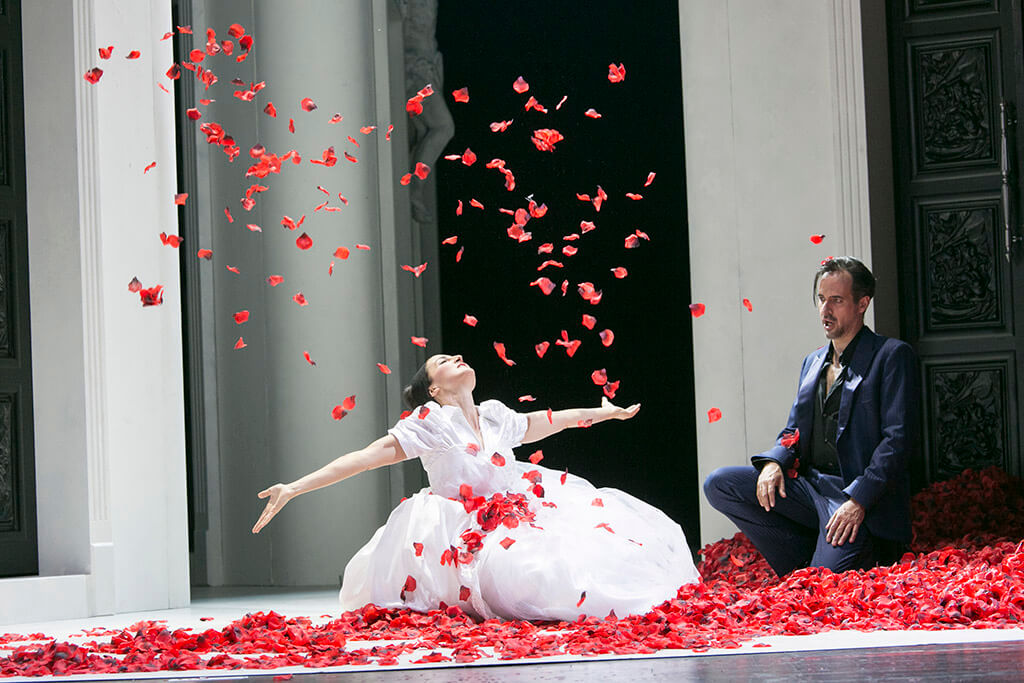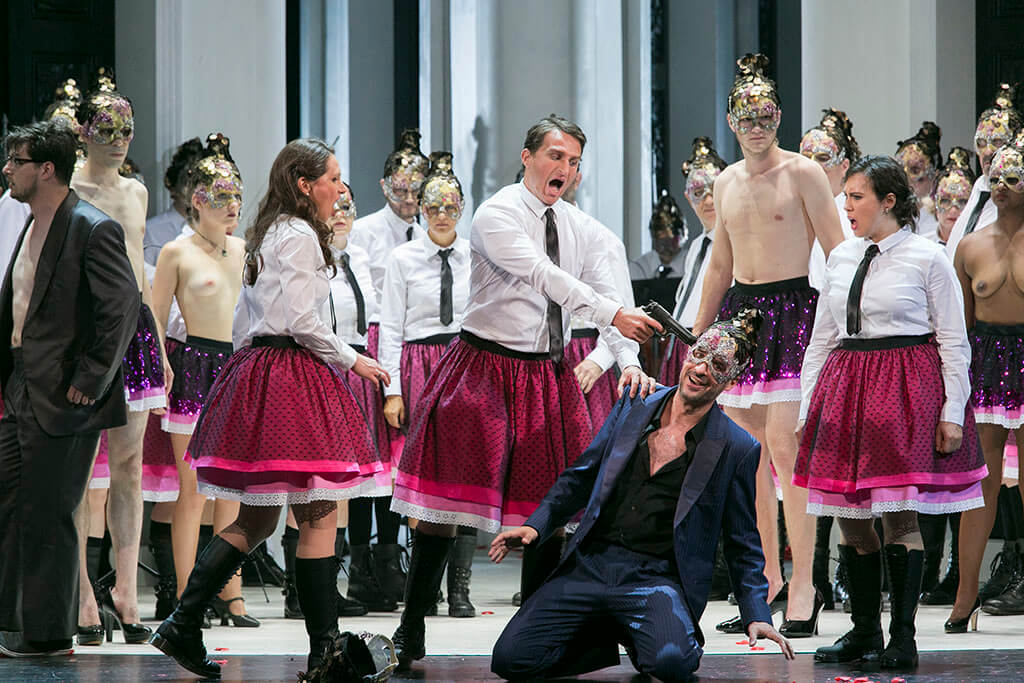
Mathias Hausmann (Don Giovanni), Jennifer O’Loughlin (Donna Anna), Nadja Stefanoff (Donna Elvira), Levente Páll (Leporello), Szabolcs Brickner (Don Ottavio), Maria Celeng (Zerlina), Christoph Filler (Masetto), Christoph Seidl (Commendatore). Herbert Föttinger, Regie. Marco Comin, Musikalische Leitung. Orchester des Staatstheaters am Gärtnerplatz. Cuvilliestheater, Munich. July 8, 2017.
Munich has been one of my opera destinations for over thirty years. My focus had always been the Bavarian State Opera during their annual Opernfestspiele, with a sprinkling of symphonic concerts and Liederabend whenever possible. This summer I finally managed to catch a performance of Munich’s other opera company, the Staatstheater am Gärtnerplatz, in a new production of Don Giovanni. Part of the attraction was the venue—the exquisite Rococo opera house known as the Cuvilliestheater was pressed into service, due to Gärtnerplatztheater’s own house being closed for renovations. I had only seen a show in Cuvilliestheater once before, and it was of all things, Bernstein’s Trouble in Tahiti. With Don Giovanni being a much more stylistically appropriate piece for that space, I couldn’t pass it up.
For those used to cavernous theatres that pass for opera houses, the Cuvilliestheater is a real treat. Its ambience gives a taste of what opera must have been like back in Mozart’s time. It seats only 550, with comfortable, velvet upholstered chairs, albeit with no armrests. I was fortunate to have an aisle seat in the second row, a good vantage point to see everything up close. The pit is relatively small but enough for a chamber-sized orchestra of up to maybe 50 musicians. I should point out that the Staatstheater Orchester is not a Baroque band, since they play a huge variety of repertoire, from Semele to My Fair Lady. The pit isn’t as sunken as most modern houses, but the acoustics for the voices are really wonderful.
This new production premiered just two weeks ago, on June 24. The simple unit set consists of three handsome-looking panels with doors, sitting on a turntable to facilitate scene changes. Directed by Herbert Föttinger, it has been time-shifted to the present. When Leporello sings his “Catalogue Aria” to Donna Elvira, he uses an iPad, not exactly ground breaking, as these electronic gadgets have become de rigueur in opera. All characters are in modern dress—that is, when they’re not taking them off! In the party scene, a few in the chorus are topless. Everyone wearing skirts, men and women. I couldn’t help but notice that in the five operas I saw on this trip, three featured topless women, and male disguised as female—is it a trend? Why? Does it enhance the story? A major departure from the original—at the end Don Giovanni points a gun to his mouth and pulls the trigger. Why? I have no idea.

Musically it was a fine performance. I was pleasantly surprised at the quality of the singing, but in retrospect, I needn’t be surprised. All the principals have fresh, attractive instruments, most are already well-established with respectable international careers; the rest are on the way up—this is a company of young artists. Impressive was the well-sung and darkly menacing Don Giovanni of Austrian baritone Mathias Hausmann. A check of his bio shows he has already appeared at La Scala and Wiener Staatsoper. Equally fine was American soprano Jennifer O’Loughlin (Donna Anna) who tossed off extra appoggiaturas here and there, not to mention a brilliant “Or sai” and a lovely “Non mi dir.”
I also liked Hungarian tenor Szabolcs Brickner (Don Ottavio), who sang with attractive, rather robust tone; perhaps just a little short on head voice in “Dalla sua pace.” Incidentally, like O’Loughlin, he also used extra ornamentation. Sadly, his “Il mio Tesoro” was cut. Fellow Hungarian bass-baritone Levente Páll was a sturdy-toned, playful and thoroughly convincing Leporello. I’d be remiss for not mentioning the beautifully sung and dramatically vivid Donna Elvira of Nadja Stefanoff. Her “Mi tradi” was outstanding. The Staatstheater Music Director Marco Comin led the chamber orchestra of about 40 musicians—I only did a rough count as unobtrusively as I could—in a well-oiled, idiomatic performance. I watched him closely from where I was sitting. He cued with care and knew the score like the back of his hand, to be expected since Don Giovanni is a bread and butter opera in German houses, and every musician is expect to know it really well. All in all, a very enjoyable first experience for me at the second opera company in Munich, and it won’t be my last.



